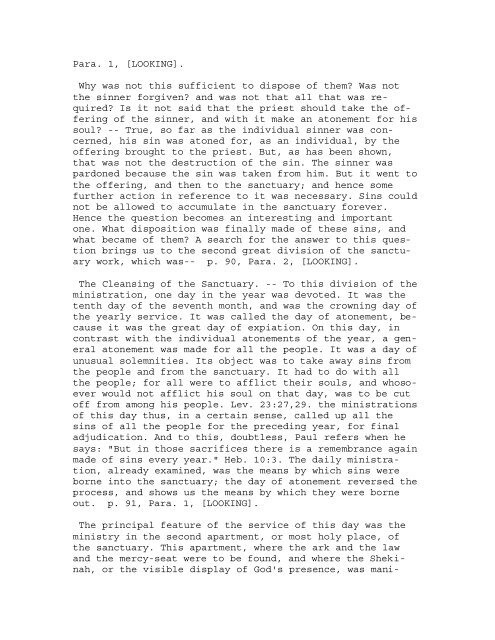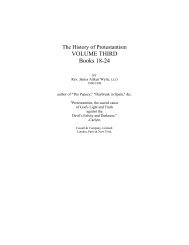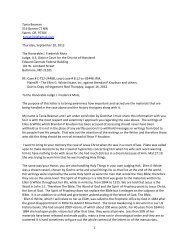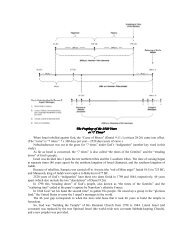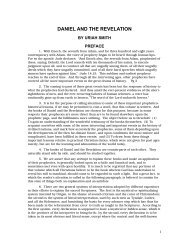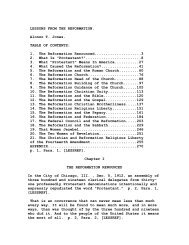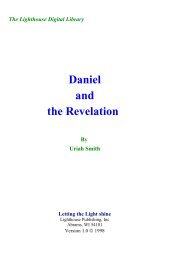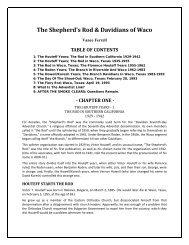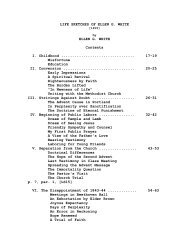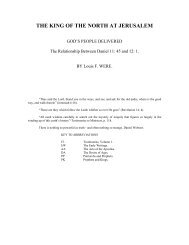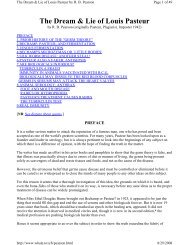LOOKING UNTO JESUS OR CHRIST IN TYPE AND ANTITYPE. BY ...
LOOKING UNTO JESUS OR CHRIST IN TYPE AND ANTITYPE. BY ...
LOOKING UNTO JESUS OR CHRIST IN TYPE AND ANTITYPE. BY ...
You also want an ePaper? Increase the reach of your titles
YUMPU automatically turns print PDFs into web optimized ePapers that Google loves.
Para. 1, [<strong>LOOK<strong>IN</strong>G</strong>].<br />
Why was not this sufficient to dispose of them? Was not<br />
the sinner forgiven? and was not that all that was required?<br />
Is it not said that the priest should take the offering<br />
of the sinner, and with it make an atonement for his<br />
soul? -- True, so far as the individual sinner was concerned,<br />
his sin was atoned for, as an individual, by the<br />
offering brought to the priest. But, as has been shown,<br />
that was not the destruction of the sin. The sinner was<br />
pardoned because the sin was taken from him. But it went to<br />
the offering, and then to the sanctuary; and hence some<br />
further action in reference to it was necessary. Sins could<br />
not be allowed to accumulate in the sanctuary forever.<br />
Hence the question becomes an interesting and important<br />
one. What disposition was finally made of these sins, and<br />
what became of them? A search for the answer to this question<br />
brings us to the second great division of the sanctuary<br />
work, which was-- p. 90, Para. 2, [<strong>LOOK<strong>IN</strong>G</strong>].<br />
The Cleansing of the Sanctuary. -- To this division of the<br />
ministration, one day in the year was devoted. It was the<br />
tenth day of the seventh month, and was the crowning day of<br />
the yearly service. It was called the day of atonement, because<br />
it was the great day of expiation. On this day, in<br />
contrast with the individual atonements of the year, a general<br />
atonement was made for all the people. It was a day of<br />
unusual solemnities. Its object was to take away sins from<br />
the people and from the sanctuary. It had to do with all<br />
the people; for all were to afflict their souls, and whosoever<br />
would not afflict his soul on that day, was to be cut<br />
off from among his people. Lev. 23:27,29. the ministrations<br />
of this day thus, in a certain sense, called up all the<br />
sins of all the people for the preceding year, for final<br />
adjudication. And to this, doubtless, Paul refers when he<br />
says: "But in those sacrifices there is a remembrance again<br />
made of sins every year." Heb. 10:3. The daily ministration,<br />
already examined, was the means by which sins were<br />
borne into the sanctuary; the day of atonement reversed the<br />
process, and shows us the means by which they were borne<br />
out. p. 91, Para. 1, [<strong>LOOK<strong>IN</strong>G</strong>].<br />
The principal feature of the service of this day was the<br />
ministry in the second apartment, or most holy place, of<br />
the sanctuary. This apartment, where the ark and the law<br />
and the mercy-seat were to be found, and where the Shekinah,<br />
or the visible display of God's presence, was mani-


